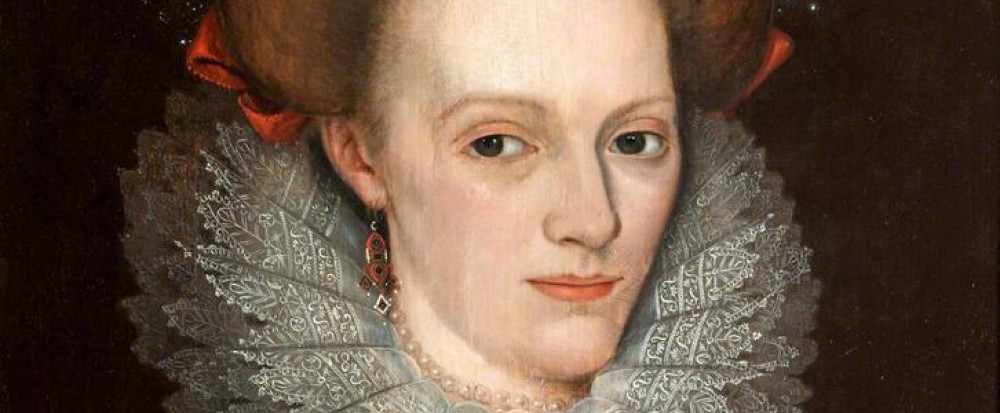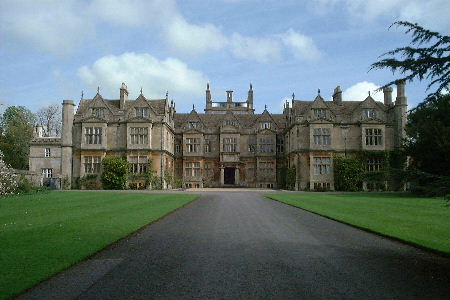When the three St John Mildmay sisters married in the early nineteenth century, they each acquired a country residence within a stone’s throw of one another.
Eldest sister Jane Dorothea moved into Corsham Court following her marriage to Paul Methuen in 1810. Younger sister Maria married a distant cousin, Henry St John 4th Viscount Bolingbroke, in 1812 and inherited the rapidly deteriorating Lydiard House, while Anne married William Pleydell Bouverie in 1814 and as the Countess of Radnor was mistress of Coleshill House across the Wiltshire border in neighbouring Berkshire.
The manor of Corsham appears in the Domesday book as the property of King Edward the Confessor and ‘the great house at Corsham’ dates back to Elizabethan times, the work of Customer Smyth in 1582.
The property had been in the Methuen family for more than 60 years when Jane married Paul, and three generations had already left their mark. In 1760 another Paul, the first owner, commissioned that celebrity landscape gardener Lancelot ‘Capability’ Brown to weave his magic and transform the Corsham estate. Brown planted numerous trees including the Oriental Plane, which still survives today and has entered the record books on account of its dimensions.
Paul’s son, Paul Cobb Methuen, commissioned architect John Nash to create a new North Front on the gothic lines of Horace Walpole’s Strawberry Hill home. The work included the building of an Octagonal Saloon and a music room for use as a picture gallery to house his father’s extensive collection. A huge undertaking and fraught with problems, most of the North Front was subsequently demolished a mere forty years after it was finished.
A keen gardener, Lady Jane turned her attention to the formal gardens. High walls with climbing plants enclose long herbaceous borders, a lily pond and garden statuary, reflecting her taste to the present day.
In 1846 Jane’s husband Paul 1st Baron Methuen brought in Thomas Bellamy to remodel the North Front, a project she would not live to see completed.
Paul Methuen served as MP for Wiltshire 1812-1819, High Sheriff of Wiltshire 1831-32 and MP for North Wilts 1833-1837 and in 1838 he was created Baron Methuen. The couple had four children – heir Paul Mildmay who died in 1837 aged just 23, a daughter Jane Matilda, Frederick Henry Paul 2nd Baron Methuen and St John George Paul. The family divided its time between Corsham Court and their London home in Park Street where Jane died on March 15, 1846. Her body was returned to Wiltshire for burial.
So how do the Mildmay sisters’ properties fare today?
The Grade I listed Corsham Court is still owned by the Methuen family and is open to the public. It is also used by Bath Spa University as a post graduate centre and for the study of arts and humanities.
Anne’s stately pile at Coleshill is sadly no more. An accident with a blow lamp during restoration work in the 1950s saw the property gutted by fire. What remained of the building was later demolished.
Perhaps the surprise success is the survival of Lydiard House. By the 1830s even Maria and Henry declined to live there, renting it out to Maria’s distant cousin Julia and her husband Sir George Orby Wombwell.
When Lady Bolingbroke, Maria’s daughter in law and a former housekeeper at Lydiard, died in 1940 the estate was mortgaged to the hilt and the house all but derelict. Bought by Swindon Corporation in 1943 deputy Borough Architect Mr Flack would later write that “the whole roof was held in place by its own weight, the friction between the tiles and spiders; webs.”
During a period when country houses were being demolished at an alarming rate, Lydiard House was rescued and restored and today is also open to the public.

















